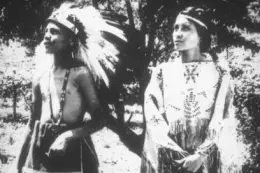Each semester, students in Professor Ken Smith’s typography and layout design class are given an unusual assignment. They are told to study all the alphabets of the Cherokee language and come up with a typeface for all the 85 letters. Each student is assigned 5 letters which they are to transform into the assigned typeface. The Bradford University professor says that most of the students are surprised at first but later enjoy the assignement as it gives them the benefit of appreciating a foreign language. The longterm goal of professor Smith is to develop standard Cherokee fonts which can be used in word processors. Plantagenet is currently the only Cherokkee typeface that is being used.
The original name for Cherokee is Aniyawiya. Cherokee has 3 main dialects. The lower dialect, the Middle or Kituhwa dialect and the Overhill or Western dialect. Most of the Cherokee alphabets resemble Latin letters that they were derived from. Cherokee is also written using Latin and diacritical marks. The language is written from left to write in horizonta lines. Cherokee is spoken by 22,000 people mainly in North Carolina, Gerogia, Carlifornia and Okhalahoma in the United States. It is one of the Indian languages of North America. Today, the Cherokee live all over the United States. A small number of people are speaking the language as fewer families continue to be bilingual. Currently, individuals continue to publish books, website and newspapers in Cherokee.
There are a number of fun facts concerning the Cherokee language. Cherokee is a matrilineal society, wth children belonging to the clan of their mother. To be considered a citizen of Cherokee by the federal government, an individual must have at least one ancestor who was recognized during the 1906 census of the Cherokee. Members of the Cherokee tribe do not like to be called Cherokee, preferring instead to calll themselves by their native mother tongue Tsalagi (pronounced Jah-la-gee, Cha-la-gee). If you watched the movie The Last of the Mohicans, which Daniel-Day Lewis starred in, you may want to listen again to the soundtrack used, as the song Will You Find Me, has portions of Cherokee and Mohican in it.

